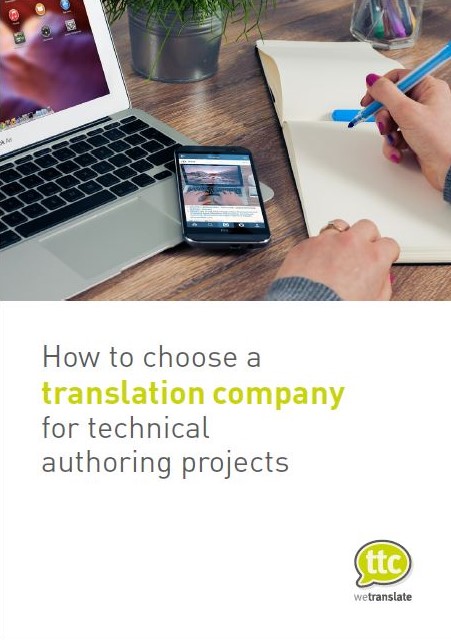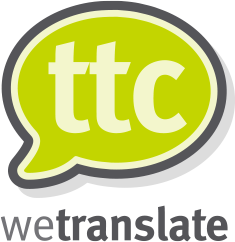
How to choose a translation company for your technical documentation
Navigating the translation industry for your Technical Authoring projects might seem daunting, but it doesn’t have to be overwhelming. We’re here to simplify the process for you, step by step. As you become more acquainted with the world of translation, you’ll gain confidence in selecting a company that aligns with your specific needs and criteria.
First, consider your future translation needs. Will there be a steady stream of projects? The choice between a one-time service and a regular partnership is crucial. Opting for a company you can work with consistently can save time and money, even if no immediate projects are on the horizon.
This choice also ensures consistent quality in future translations.
Benefits of using a translation company include:
- Comprehensive Management: A translation company handles the translation, review, proofreading, and coordination of translators, saving you the effort of finding and managing translators, especially for multiple languages.
- Expertise in Tools: They know which computer-assisted translation (CAT) tools best complement your technical documentation platform, ensuring efficient and accurate translations.
- Suitable Translator Selection: The company matches your project with translators who specialize in relevant subject areas and are aware of regional language variations. For example, a Canadian French translator will have a different approach than a European French translator.
- Correct Formatting: They ensure that the translated document is in the right format, using tools like Paligo for easy export and import in Xliff and other formats. Many also offer Desktop Publishing (DTP) solutions.
- Management of Translation Memories and Term Bases: Utilizing technological advancements, translation companies use Translation Memories (TM) and Term Bases (TB) to speed up the process and reduce costs. These databases ensure consistent use of terms and phrases across projects.
Ultimately, a translation company can streamline the process, ensuring quality, consistency, and efficiency in translating your technical documents.
When selecting a translation provider, a key factor to consider is the company’s structure, as this determines their capability to manage your project effectively.
Translation companies generally fall into two categories: Outsourced and In-house.
Outsourced Companies: These firms operate on a project basis. A team of project managers assigns tasks to freelance translators, who are external partners. These freelancers are typically vetted and have a history of working with the company.
Outsourced companies rely on these freelancers instead of employing full-time in-house translators, except for project managers. The managers ensure quality control, assemble translation teams, oversee the entire process, and guarantee timely project delivery.
In-house Companies: In contrast, in-house vendors often have limited capacity for large projects.
They primarily depend on their in-house translators, resulting in a restricted range of language pairs. Some companies blend the use of in-house and freelance translators.
Benefits of Outsourced Companies:
- Capability to handle large, multilingual projects.
- Project managers are freed from translation tasks, allowing them to focus on the smooth execution of projects.
- Proficiency in organizing teams and resources.
- Access to a global network of translators.
- Rapid response to urgent inquiries.
Advantages of In-house Vendors:
- Direct communication with the translator.
- Easier involvement in ongoing projects.
- Greater opportunity for close collaboration.
Ultimately, the choice between an outsourced company and one with in-house translators hinges on your project’s requirements.
When a company is well-versed in the technical documentation tools you use, it enhances the service quality significantly.
Take our experience with Paligo, for instance. As we began collaborating with clients using Paligo for their technical documentation, we invested heavily in training our team.
This involved enrolling in Paligo-specific courses, actively creating content using Paligo (paligo.net), and familiarizing ourselves with its various functions. This proactive approach helped us anticipate and tackle potential challenges, ensuring we deliver top-notch service.
We’ve gone a step further by partnering with the Paligo support team to devise dynamic solutions for the issues we encountered. This collaboration has not only bolstered our expertise but has also led to new client relationships.
For more insights into our experience and capabilities with Paligo, you can visit our dedicated page at https://ttcwetranslate.com/paligo-translation/.
Once you’ve determined the services you need, the volume of translation, the type of company you’re seeking, and the qualifications required in a vendor, you can begin your market research to find the right provider.
Getting recommendations from a trusted source is an excellent method, as is attending certain exhibitions.
The Internet is another valuable resource. Explore customer reviews, delve into the company’s website, and examine their blog posts and case studies to gauge if they’re a suitable match for your needs.
Here’s a checklist of questions to guide your search:
- Do they have clients in industries similar to yours?
- What expertise do they offer?
- Can you see them as a long-term partner, sharing similar work ethics and values?
- What certifications and affiliations do they hold, and what quality standards and guarantees do they offer?
- How experienced is the company?
- Does their website project professionalism?
- Do they showcase their case studies and solutions?
- What is their social media presence like?
- Evaluate their content to see if they invest time in their business.
For more detailed information, download our white paper: ‘Ten Questions to Ask When Choosing a Translation Company’.
After conducting your research, you’ll have a list of potential vendors. The best way to narrow down this list is by contacting them.
The manner and speed of their communication can help you decide which companies you see potential in working with and which you don’t.
Request additional information to see if the company is forthcoming and responsive to your queries, an early sign of a reliable language solution partner.
Pay special attention to the team that will handle your projects, as this is a crucial aspect of the selection process.
To gather comprehensive information, consider the following aspects:
- Are they qualified for the job?
- Does the team have the skills for Desktop Publishing (DTP), especially if formatting is a requirement?
- Are they adaptable to new applications and work processes?
- Have they managed similar projects before?
- Are they problem solvers?
- Do they have experience with your specific technical documentation tools?
- Can they convert documents into the required formats?
- Are they knowledgeable about the import and export functions of these tools?
- What training have they undergone?
- What is their project management process?
- Can they meet your deadlines?
- What translation tools do they use?
- Are they willing to provide Translation Memories (TMs) and Term Bases (TBs) for your projects?
- What are their rates per word?
When choosing between several companies, keep records of the information you collect from each.
This will help you compare and decide who meets your criteria.
From our experience, clients often request high-quality translations, delivered quickly and at a low cost.
However, meeting all three of these expectations is usually unrealistic.
Quick, high-quality translations come at a higher cost, whereas fast, cheap translations often compromise quality. It’s important to prioritize what matters most to you.
When it comes to costs, don’t assume that every company calculates their rates in the same way.
The rate determination involves various factors and considerations. Most companies base their rates per word on the source text, but there are other methods too.
Some calculate rates per hour, character, page, document, or the target word count, among others.
Additionally, various services and factors are taken into account when providing a quote. Let’s explore some of these:
- Translation: This involves a qualified professional linguist translating the content and verifying its accuracy before delivery. After the translation is completed, it undergoes a Quality Assurance process managed by the project managers.
- Translation + Revision + Review: Here, the content is translated by a qualified linguist, then revised by an independent professional, and reviewed. In the review stage, the changes are approved by the original linguist and undergo Quality Assurance by project managers. These additional steps, requiring more time and personnel, naturally increase the cost. Different companies might label these processes differently, such as ‘review and proofreading’ or ‘TEP (translation + editing + proofreading)’ instead of ‘revision and review’.
- Localisation: This goes beyond translation by considering cultural differences. The content is adapted to fit the target culture, ensuring that your audience understands it in their cultural context.
- Initial System Setup Cost: If the company uses its own project management system or portal and you plan to continue working with them, they might charge a one-time fee to set up their system for your projects.
- Typesetting/DTP: Projects requiring extensive formatting might incur additional charges.
- Rare Language Pairs: Translators for rare language pairs are less common and might be more expensive due to the difficulty in finding available qualified translators, which can increase the cost.
Remember, each translation company might name and structure these processes differently according to the standards they follow, so it’s important to clarify these details when obtaining quotes.
Before selecting a translation company, it’s essential to:
- Understand Your Project’s Scope: Clearly define the extent and specifics of your project.
- Know Your Target Audience: Identify who will be reading your translated content.
- Consider Future Projects: Think about any upcoming needs that might influence your choice of a translation company.
- Determine Required Services: If unsure about what services you need, don’t hesitate to seek advice from translation companies.
- Decide on the Type of Company: Consider whether a company that outsources translation teams or one with an in-house team would be more suitable for your needs.
- Research Professional Associations: Look for associations in the translation industry with strict membership criteria, such as the Association of Translation Companies.
Your Action Plan:
- Begin Your Search: Use online search engines or explore members of the Association of Translation Companies.
- Compile a List of Potential Providers: Identify companies that might meet your needs.
- Investigate Further: Visit their websites and request more information.
- Learn About the Team and Work Ethics: Ensure the company has the necessary expertise and work ethic aligning with your project requirements.
- Understand the Costs: If the pricing is higher than expected, weigh all factors related to your project’s needs to determine if the cost is justifiable.
- Keep Records for Comparison: Document information about each company to aid in comparison.
Now you’re equipped with the key considerations for choosing a translation company for your technical documentation projects. We hope you found this article informative and helpful.


